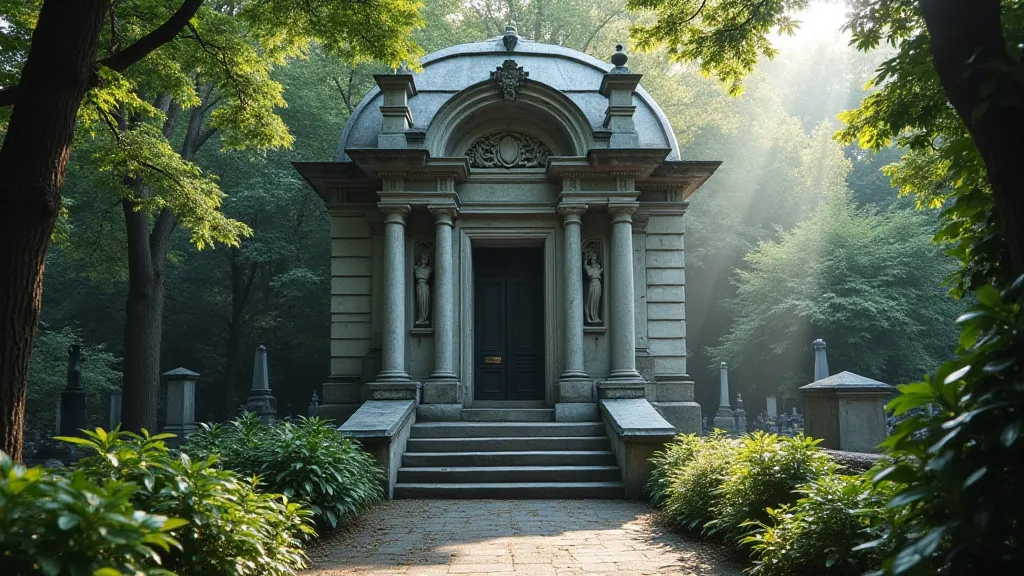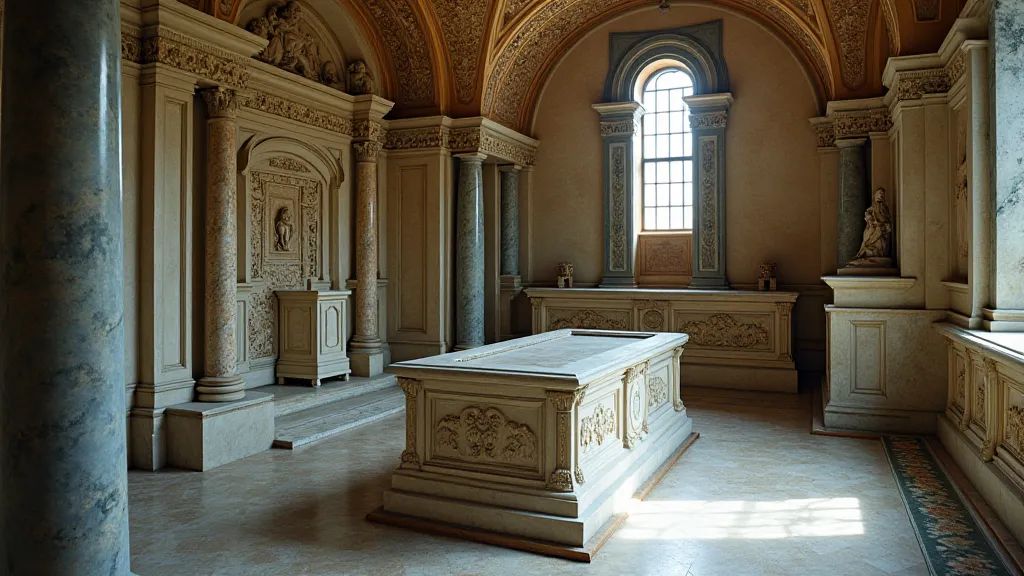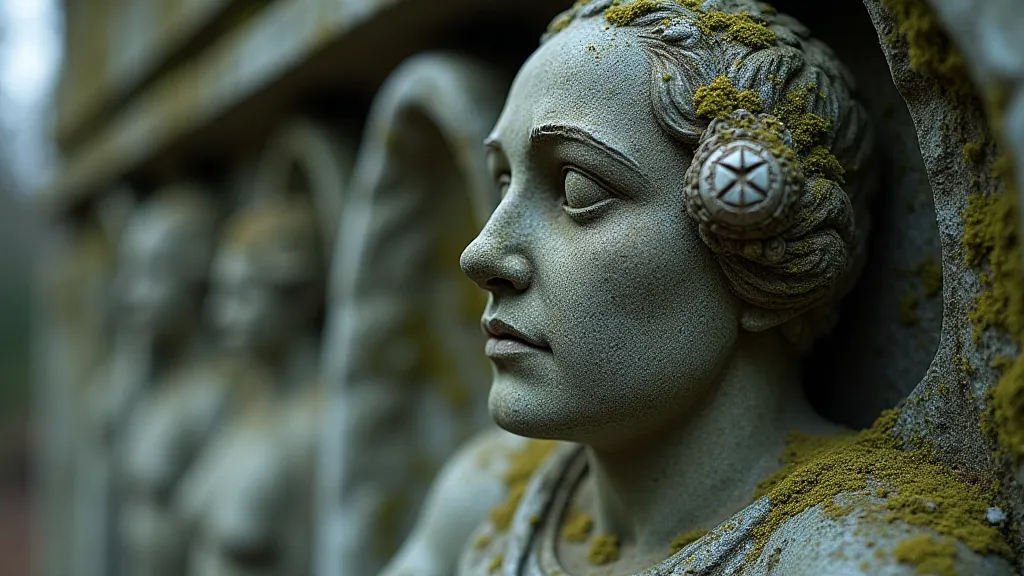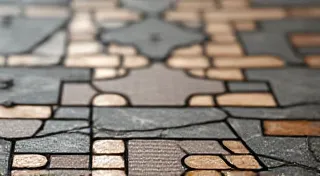The Geometry of Grief: Mausoleums as Architectural Poetry
We build to endure. Cathedrals pierce the sky, monuments carve themselves into the landscape, and bridges span chasms, all testaments to human ambition and our desire to leave a mark. Yet, few architectural endeavors grapple with mortality as directly as the mausoleum. More than just a repository for remains, a well-designed mausoleum is a profound statement – an architectural poem etched in stone, a geometry of grief, and a testament to the enduring power of love and remembrance. It is a space where architecture transcends mere functionality and becomes a poignant reflection on the fragility of life and the complexities of loss. The very act of planning and constructing such a structure speaks volumes about human longing for permanence and connection.
The history of mausoleums is as old as civilization itself. From the pyramids of Egypt, originally conceived as homes for the pharaohs' ka, their spiritual double, to the elaborate tombs of Mesopotamia, early mausoleums emphasized power and divine connection. Roman family tombs, often clustered along roads, were vibrant displays of status, showcasing the lineage and achievements of prominent families. The word "mausoleum" itself derives from the elaborate tomb built for Mausolus, a satrap in the Persian Empire, and his wife Artemisia II of Caria in the 4th century BC. Their tomb was so magnificent that it became one of the Seven Wonders of the Ancient World, setting a standard of grandeur that subsequent generations attempted, and often failed, to match. Examining the creation of these monumental projects reveals not just a desire for remembrance, but also a fascinating glimpse into the evolving practices and the intricacies of architectural plans throughout history.

Beyond Function: The Language of Form and Material
What sets a mausoleum apart isn’s just its purpose; it’s the deliberate choices architects make in its design. Early examples often mimicked the architecture of the living – temples, palaces, even domestic houses. This blurring of boundaries between life and death reinforces the belief in an afterlife mirroring earthly existence. The materials themselves convey meaning. Granite, marble, and basalt – enduring stones – symbolize permanence and strength, echoing the desire for a lasting legacy. The choice of a pyramid shape might evoke a connection to the sun and a spiritual ascent. A simple, unadorned structure, conversely, can signify humility and a focus on the deceased's inner qualities. Understanding the rationale behind material choices offers insight into the symbolic language embedded within architectural design.
The Victorian era, particularly in the 19th century, witnessed a resurgence of elaborate mausoleum design. Fueled by a fascination with romanticism, spiritualism, and a renewed appreciation for historical styles, Victorian-era mausoleums often incorporated elements from Gothic, Romanesque, and Egyptian architecture. Pointed arches, intricate carvings, stained glass, and sculpted figures became commonplace, transforming the mausoleum into a miniature temple dedicated to the memory of the departed. There was a tangible emotional investment in these structures; families poured their grief and love into their design. The precision and detail required to execute these ambitious projects highlight the sophistication of Victorian era design and the importance of the clever use of light and shadow in architectural craftsmanship, something also deeply explored in Romanesque architecture.
I remember visiting a small, family-owned cemetery in rural Pennsylvania as a child. My great-grandmother's parents were buried there, and their mausoleum, though modest in size compared to some others, was strikingly beautiful. Constructed from local sandstone, it featured delicate carvings of lilies and ivy – symbols of purity and resilience – intertwined with the names of family members. The interior, dimly lit by a few strategically placed windows, possessed an almost sacred atmosphere. It wasn’s just a place of interment; it was a sanctuary, a space for quiet contemplation and a connection to generations past. That experience shaped my understanding of how architecture can convey profound emotions, and how a seemingly simple structure can hold within it a universe of stories. The sense of permanence and quiet dignity was deeply affecting, a poignant reminder of lives lived and legacies left behind.
Spatial Arrangement and Symbolic Details
The spatial arrangement within a mausoleum is equally significant. The long, echoing corridors of some Roman family tombs were designed to evoke a sense of timelessness. The placement of sculptures – weeping angels, allegorical figures representing virtues, or portraits of the deceased – adds layers of meaning and narrative. The lighting plays a crucial role, often using subdued tones to create a contemplative and reverent atmosphere. Consider the use of light in the Taj Mahal, a mausoleum built by Mughal emperor Shah Jahan in memory of his wife Mumtaz Mahal. The way the light streams through the marble screens creates a mesmerizing effect, enhancing the sense of ethereal beauty and eternal love. The interplay of light and shadow is a recurring theme in architectural design, used to create mood and emphasize certain elements.
Smaller, family mausoleums often feature niches or alcoves to house urns or other memorial objects. These personalized touches allow families to create a more intimate space for remembrance. The presence of a family crest or a carefully selected epitaph further contributes to the mausoleum’s identity, solidifying its place within the lineage of the family. These seemingly small details contribute significantly to the overall narrative and emotional impact of the space.

The Enduring Legacy: Restoration and Appreciation
Many historic mausoleums have fallen into disrepair over time, victims of weathering, vandalism, and neglect. Restoration efforts are becoming increasingly important in preserving these architectural treasures for future generations. However, the process is often complex, requiring specialized knowledge of historic building techniques and a deep respect for the original design intent. Ethical considerations are paramount – how much intervention is appropriate? How do we balance preservation with accessibility?
For those interested in collecting or restoring antique architectural elements, fragments of ornamentation found in older cemeteries can offer a tangible connection to the past. These fragments – fragments of sculpted angels, weathered sarcophagi, or intricately carved panels – can be incorporated into personal collections or used to repair damaged structures. However, it's crucial to understand the legal and ethical implications of removing elements from historic cemeteries. Always obtain proper permission and ensure that the removal doesn't compromise the integrity of the original structure. It's a delicate balance between preserving history and honoring the intent of the original architects, requiring a careful consideration of both aesthetic and ethical concerns.
The design choices made in these structures reflect a broader understanding of human existence—a yearning for meaning, a confrontation with mortality, and a testament to the power of memory. Studying the nuances of their construction and aesthetic choices gives insights into the values and beliefs of the people who built them.
In a world increasingly dominated by fleeting trends and disposable culture, the enduring presence of mausoleums offers a powerful counterpoint—a reminder of the importance of permanence, legacy, and the human need to connect with the past. They stand as testaments to the possibility of transforming grief into beauty, loss into remembrance, and fragility into enduring strength. The deliberate and intricate design, considering every element—from the selection of materials to the placement of lighting—is a testament to a cultural understanding of space and the role it plays in expressing profound emotions.

While many architectural styles attempt to inspire awe or reflect societal progress, few demonstrate such a direct engagement with the fundamental aspects of human existence. They represent a profound acknowledgement of the inevitability of death, coupled with a fervent desire to transcend it. And in that transcendence, they offer a timeless beauty and an enduring source of inspiration.





